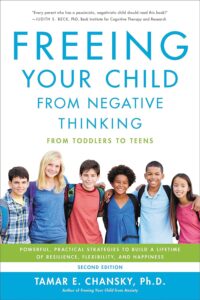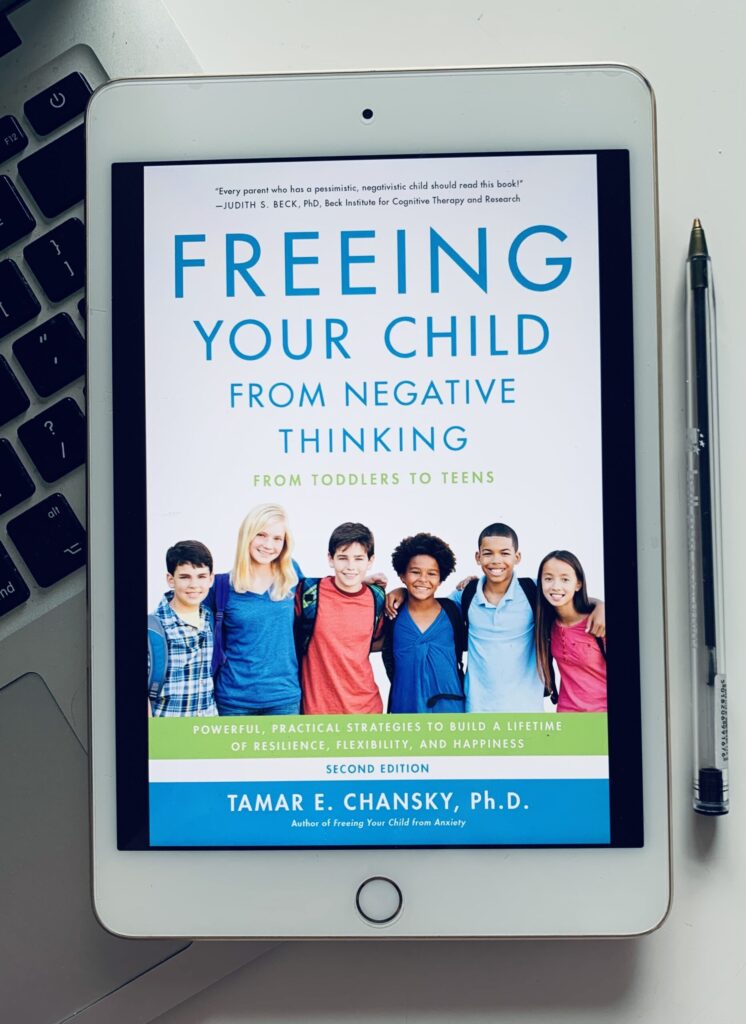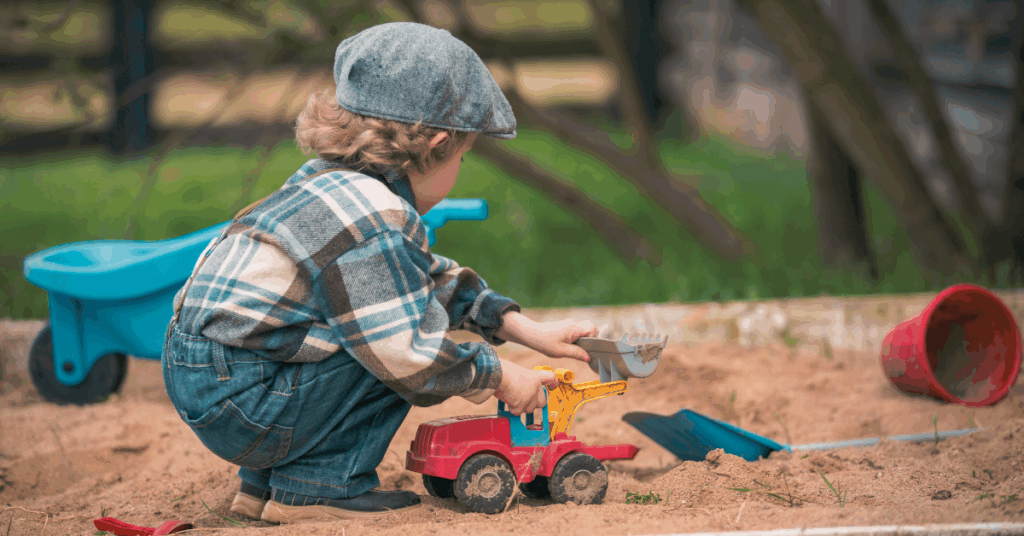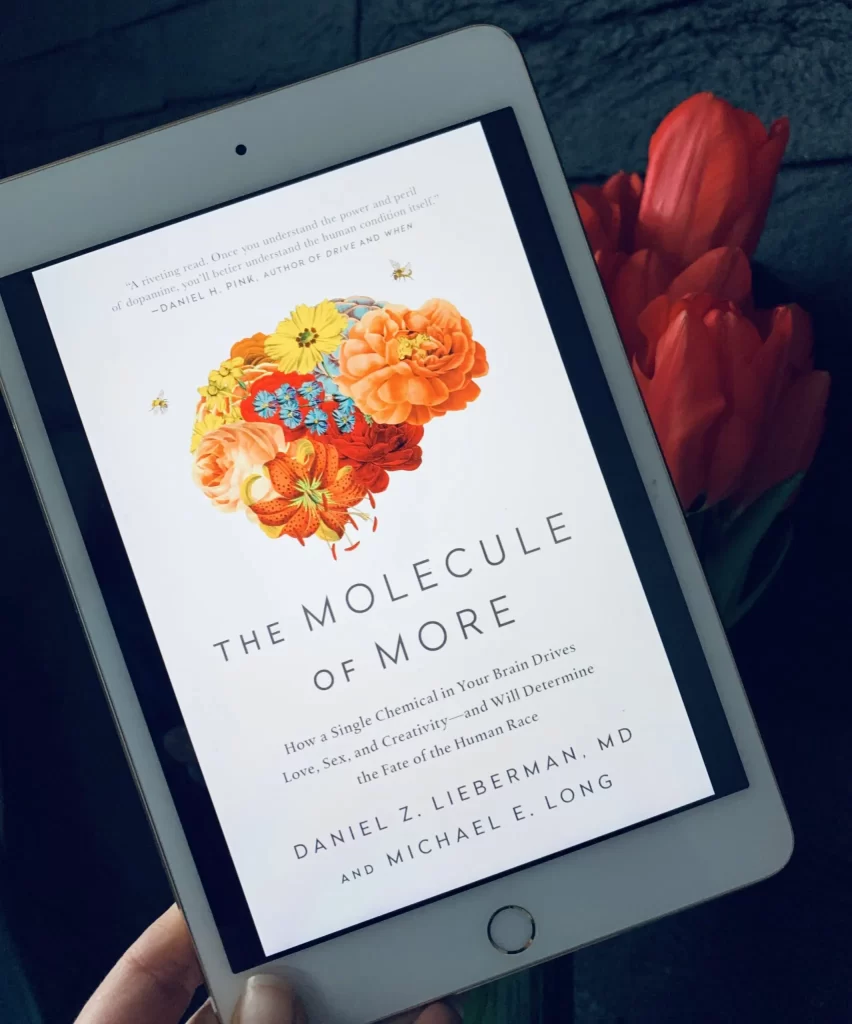 Freeing Your Child from Negative Thinking. Book Summary
Freeing Your Child from Negative Thinking. Book Summary
Powerful, Practical Strategies to Build a Lifetime of Resilience, Flexibility, and Happiness
Tamar Chansky
Da Capo Lifelong Books (20 Oct. 2008)
About Tamar Chansky
Dr. Chansky, a licensed psychologist, is the Founder of the Children’s and Adult Center for OCD and Anxiety. She is the author of numerous books on anxiety and negative thinking including the popular Freeing Yourself from Anxiety Series: Freeing Your Child From Anxiety, Freeing Your Child from Negative Thinking, and Freeing Your Child From Obsessive Compulsive Disorder. Dr. Chansky is the creator of the educational website: worrywisekids.org. Her book for adults, Freeing Yourself from Anxiety is for anyone suffering from everyday worry, an anxiety disorder or depression or wanting to prevent those thinking patterns from taking hold.
About The Book
“Learning how to handle disappointments, obstacles, and frustrations is a daily task on the to-do list of all children—it’s part of how they learn and grow. While some children ride out these bumps with decent shock absorbers, for children who are burdened with a nose for the negative and a keen radar for the bumps, the ride can easily be ruined. They take those bumps hard, fall into those holes deeply, dwell on them, and pull other people down with them. But adding insult to injury, they don’t just fall; they make a whole new theory about themselves and why they fell. There are no coincidences, nothing is insignificant: I’m stupid, I deserve it; see, I told you nothing good ever happens to me. And because those thoughts don’t come with an introduction—“ The following message is sponsored by your unreliable negative brain”—they believe what they hear, word for word. Unbeknownst to them and their bewildered parents (and however much they want to be happy and help themselves), all their efforts seem to make the problems worse rather than better, deepening the hole of unhappiness. […]Some kids get stuck in this thinking only occasionally. Other children seem to be permanent residents in the land of what’s wrong, finding relief only in those fleeting moments when everything is just right (although typically, parents can’t relax in those moments because they are waiting for the other shoe to drop, or they know that a total meltdown is just a broken shoelace away). Whatever your child’s situation – whether she is stuck in a negative place or just passing through – you can help safeguard her from these debilitating patterns of thought. Children can break free from negative thinking when they identify it not as the “truth” but as an automatic first reaction, which they can counter by cultivating a more neutral, accurate, or even hopeful second reaction. Parents, equipped with the right information can be powerful agents of this change in their child’s thinking.”
Dr. Chansky is one of the top experts in child cognitive behaviour therapy and anxiety disorders. I found her work while searching for ways to help my son deal with anxiety and negative thinking, and her book has been my go-to ever since. It feels like I finally found the manual for my child.
With a mix of solid research, CBT insights, and her experience as a child therapist, Dr. Chansky breaks down why kids get stuck in negative thinking and offers tons of practical strategies to help them manage those thoughts, build optimism, and become more emotionally resilient.
This book is packed with useful tips and is a must-read for any parent with a kid prone to negative thinking.
In these notes, we’ll barely scratch the surface, so definitely grab the book for more. It’s a game-changer.
Let’s dive in.
P.S. The book is rooted in positive psychology, so if you’re into that, check out our notes on Martin Seligman’s The Optimistic Child and Flourish, Sonja Lyubomirsky’s The How of Happiness, Carol Dweck’s Mindset, Tal Ben-Shahar Happier, and Angela Duckworth’s Grit.
Key Insights
Portraits of Negative Thinking
Dr Chansky kicks off the book with explaining different portraits of negative thinking. She suggests six types of negative thinkers:
- Just passing through: the occasionally devastated, typically happy child. These children are usually happy and resourceful, but even a small challenge can throw them off. Parents of these kids have a relatively easy job – they need to teach resilience and help their children understand that they can navigate through tough situations.
- Glass half empty: the negative magnet: These children tend to focus on the negative and frequently make pessimistic comments. For them, parents should focus on helping their child view everyday annoyances more neutrally and shift their mindset towards positivity.
- The anxious-negative child: These children are constantly consumed by “what-ifs” and tend to see danger or harm around every corner. They often feel hopeless about their ability to manage life. Parents should first address the child’s negative thinking, then work on the underlying anxious thoughts that fuel it.
- Perfectionist pressure cooker: These children want everything to be “just perfect.” They focus so much on their failures that they struggle to recognize their successes.
- Exploders: These children express negativity through anger and often blame others for their problems.
- Imploders: kids who invest a lot into keeping their big feelings and problems private from others at school, but they are easy to lose it when come back home or in the car on the way back home.
So, which one is your kid? Or better yet, which one are you? I’m definitely the Perfectionist Pressure Cooker. Yep.
In the book, Dr. Chansky digs into the latest research explores different pathways to the negative thinking, covering cognitive styles, stressful events, and even genetic tendencies. This section helped me understand my child better and also made me to reflect on my own negative thinking patterns. I highly recommend reading it for a deeper dive.
Now, let’s get into some practical tools.
Cultivating The Two Track Mind
“So herein lies our challenge: If we want our children to persevere in the face of adversity, we need to help them seek out the options, to make those options more inviting, and help our children see that in withstanding the challenges of navigating through the dark lands of their own thinking, they can win. Just as fish don’t know they are in water, they just swim, children who tend toward the negative thinking often don’t know they’re thinking negatively – they’re just thinking. The first step in changing negative thinking is knowing when it’s happening. Once children recognize the sound of their “negative brain,” they learn that following those messages leads them to a dark place they don’t want to be. Instead, they can choose to call on their “smart brain” for another interpretation of the story that will lead to a more promising pathway. This is what cultivating the two-track mind is all about: Just because you start with a negative thought doesn’t mean you need to stay stuck with it. You get to choose what to think. Negative thoughts should be treated as hypotheses—questions or theories to be proved or disproved—rather than decrees. Especially as children learn that negative thoughts are typically unreliable (however speedy) reactions, they will be less tempted to pull up a chair and listen. So it’s not the thought, it’s where you go next. Much as we can’t control who calls us on the phone, we can’t control the calling of negative thoughts, but we can decide how carefully we listen, how long we stay on the phone, and who we keep on our speed dial.”
This is such a powerful idea even for many adults: we get to choose what to think. Imagine if this was taught in schools – how much more agency people would feel in their lives, and how quickly they’d grow.
The good news? You can teach your child how to shift from automatic, negative reactions to a more empowering mindset.
In her book, Dr. Chansky shares 9 lessons on how to help kids outsmart the tricks their brains play on them. Here are my top three takeaways:
- Teach your child to think with both sides of their mind. Explain how the “Meany brain” creates negative thoughts that affect their feelings and actions, but they can always choose to listen to their “good thoughts brain” instead. Letting them name their negative brain helps relabel the problem as “that’s just negative brain talking.” Dr. Chansky even provides a full script later in the book on how to explain this to kids (she calls it “the negative think hole”), and it was a total lifesaver for us.
- Optimism is a skill, and kids prone to pessimism need it the most. Chansky dives into Martin Seligman’s strategies for teaching optimism. If you want to explore this more, check out our notes on The Optimistic Child.
- Spotting thinking errors like catastrophizing, mind reading, and overgeneralizing is key. Once you recognize these patterns in your child, you can start teaching them how to shift their perspective.
One of the best games for kids wired to think negatively is “Fortunately, Unfortunately”—and it’s been a game-changer at our house. Larry Cohen, one of my favourite child therapists and author of The Opposite of Worry and Playful Parenting, uses it in his sessions. Here’s how it works:
You and your child each write down five sticky situations on cards and toss them in a hat. Take turns drawing a card and stating the unfortunate event (e.g., “Unfortunately, the movie I wanted to see was sold out”), and then the other person responds with a positive spin (“But fortunately, I got to see another movie instead”). You go back and forth for a few rounds, like: “Unfortunately, there were only seats up front.” “Fortunately, I got a seat with no gum under it.” “Unfortunately, the armrest was sticky.” “Fortunately, I was wearing long sleeves.” And so on.
That part of the book is pure gold—definitely check it out for more. For now, let’s take a quick look at one of the lessons from that chapter that really clicked for me.
The Power of Nonnegative Thinking
“It is a common misconception that positive thinking is the secret fix to negative thinking. While this misconception makes intuitive sense, decades of cognitive research have yielded the unexpected result that what differentiates those who are depressed from those who are not is not the presence of positive thoughts (both groups may have these) but the presence of nonnegative or neutral thoughts, which have a buffering effect on depression.”
So powerful, right? Swapping “I’m really bad at swimming” for “I’m great, even better than Michael Phelps” doesn’t help much. But replacing it with “I’m practicing hard every week, I can improve”—that’s the real game changer.
Neutral thoughts work because they shift the focus to what’s factual: “I’m working hard and doing my best.” Or they can be strategic: “Stay focused,” “I can handle tough things.” Cue – growth mindset!
One strategy to teach your child (and practice yourself) is to neutralize the sting of negative thoughts by accepting them instead of trying to fight them. Rather than piling negativity on top of itself or wasting energy on forced positivity, just acknowledge how you feel. For example:
“I hate being sick. Why do I always get sick when it’s my friend’s birthday party?” vs. “Yeah, being sick is a drag, and I’m sad I’m missing the party.”
This works for parents too. Instead of thinking, “Why can’t I stop yelling at my kids? I’m a bad mum,” you can try Dr. Becky’s mantra from Good Inside: “I’m a good parent having a hard time.”
It also resonates with Dr Shefali’s wisdom in her great book The Conscious Parent:
“The more we hone this ability to meet life in a neutral state, without attributing “goodness” or “badness” to what we are encountering, but simply accepting its as-is-ness, the less our need to interpret every dynamic as if it were about us. Our children can then have their tantrums without triggering us, and we can correct their behaviour without dumping on them our own residual resentment, guilt, fear, or distrust.
If you are looking for practical ways to become less reactive in any relationship, you have to learn to meet life in neutral state. Here is your new mantra to embrace “as-is-ness” of life: “It is what it is.”
P.S. This also made me think of Gabriel Oettinger’s research on positive thinking—check out our notes on her fantastic book Rethinking Positive Thinking for more insights.
Feelings Pass and Go – Take Emotional Temperature
“[…] try to move your child from being the feeling to talking himself through it. Intense feelings fully engage us and we are not open to information. To help a child to step down from that state gradually, parents can ask him to give the anger, sadness, or frustration a number, from one to a hundred and, essentially, take his “emotional temperature.” What is most helpful about this intervention is that it includes the expectation that things can change. Without numbers a child may not be able to distinguish the subtle shift when his feeling begins to give way. So if you ask, “What is your temperature now?” and again ten minutes later, the good news, which he discovers himself, is that his temperature went down. A second aspect is to have anchors or reference points: “What size does this feel like: small, medium, large, or supersize? How big do you want it to be?” By making these distinctions you are introducing the idea that how he’s feeling is changeable: He doesn’t have to feel the way he does.”
This technique should be in every parent’s toolbox. It teaches kids that feelings aren’t permanent—they change, sometimes within minutes.
I recently tried this with my son when he was angry with his brother for “being mean.” I took his “madness temperature” every five minutes while just sitting with him, offering a calm presence. Once his emotional temperature dropped, we could talk, and soon after, he was back to playing with his brother. Connect and redirect in action.
Give it a try—you’ll be amazed at how well it works.
In the book, Dr. Chansky offers a wealth of tools for improving emotional regulation and strategies to cool things down during intense moments—definitely worth checking out. It’s incredibly useful.
The key is to remain calm and handle your child’s big feelings like a pro. As parents, we need to get comfortable with our child’s discomfort and avoid rushing them through it. Aur goal is to allow them to process their emotions and find the solution to the underlying problem at their own pace.
Lessons From Positive Psychology
“If resilience is about bouncing back from adversity, then strengths are what children push off from to set that bounce in motion. […]
Once our child’s strengths have been identified, they become infinitely portable. Children can, with our help, move more fluidly through their lives knowing that they – like all children – come well stocked with a wealth of resources at their fingertips for mobilizing in times of distress, for using every day to create a satisfying life for themselves, and also for sharing their gifts with the world.”
That’s lesson number one, and it’s huge: shifting our focus from what’s wrong with our child to what’s right—their strengths—can be incredibly liberating and empowering for both parents and kids.
Australian psychologist Lea Waters dedicates her whole book to helping parents bring out the best in their kids—check out our notes on The Strength Switch for more on that.
Dr. Chansky builds on cutting-edge research in positive psychology to offer tons of practical strategies for boosting happiness, positivity, and optimism. Here are a few ideas: have your child write down what they’re good at, create an inspirational collage, set up a “golden moments” box or folder, savour positive moments, practice optimism, give them a sense of control, and do random acts of kindness.
So, what are your child’s top 3 strengths? Which strategy will you use to boost their positive emotions?
The Master Plan
“Empathize with Your Child: Go with the swerve; accept and reflect what your child is feeling.
Relabel and Specificize: Figure out what really went wrong; help your child shrink the problem back to the specific issue at hand.
Optimize: Help your child to generate different perspectives on the situation and to choose the one that makes her system work best. Find the flaw in the thinking if she needs to get the evidence to go to the other side.
Mobilize: Encourage your child to pick up her brain and get busy, taking action to fix the problem, not dwelling on it.”
That’s the framework you can use for nearly every tricky situation with your child – whether it’s “I’m not going to try that art club, it’ll be boring and lame,” “I want to quit football, I’m terrible at it,” or “Max isn’t my friend anymore; I’m never talking to him again!”
What I love about this approach is that it goes beyond just empathy and validating feelings. It helps the child find solutions to the underlying issue. It allows you to step into a coaching role, getting to the root of the problem so you can guide your child toward a resolution and taking action.
I must say, the book is a goldmine of scripts for parents. From handling loss, failure, and criticism, to trying new things, managing friendships, and overcoming jealousy – Dr. Chansky covers it all.
The key is to pause. Instead of immediately trying to make our kids feel better, focus on helping them see how they can improve by actively solving the problem.
And here’s a new mantra for parents: “I don’t need answers; questions are better.”
P.S. This approach aligns closely with Ross Greene’s Collaborative Problem Solving from The Explosive Child – check out our notes for more details.
Action Steps For You:
- Manage Your Reactions: Over the next week, pay attention to how you respond to your child’s distress. Are you angry, rescuing, or trying to cheer them up? Instead, focus on your breathing, remind yourself it’s not an emergency, and relax your body. As you look at your child with compassion, visualize their strengths and abilities to handle the situation. By lowering the urgency, you help reduce the emotional intensity so both you and your child can function better.
- Teach the Two-Track Mind & Use the Master Plan: Help your child recognize negative thinking. Together, give it a name (like “Super Villain Brain” or “Meanie Brain”) so they can identify when it’s happening. Then use the Master Plan to shift their perspective and create a strategy to solve the problem.
- Create Positive Moments: Cultivate positive emotions with your child by incorporating small, meaningful activities. Choose one to start with: practice mindfulness (breathe and smile, take a mindful walk), play together (try ideas from Unplug and Play), discuss three things you’re grateful for at bedtime, savour successes and little wins, practice positive noticing or even watch funny videos together.
Quotes From The Book:
-
“As parents, the more we work on our own negativity and model adaptive responses the more our children will feel free to do the same.”
-
“Although the negative brain is programmed to see the problems, flaws, and disappointments, we can nevertheless pick ourselves up and look at things through a different window. The thoughts are just one of many interpretations of a story, and choosing to consider just one or two of the alternatives releases you from the moment of being stuck.”
-
“Negative thinking supersizes the problem; smart thinking is about “specificizing” the problem.”
-
“What we fear about feelings—especially big feelings—is that they are complex and messy and, perhaps like vomiting, are unpleasant and unexpected and feel uncontrollable, like something very wrong is happening.”
-
“The only way kids can transform their problems from the humungous package that won’t fit through the front door into a manageable one they can hold in their hands is by hearing themselves think and feel.”
-
“When your child is miserable, helping her feel better is one of the challenges and privileges of parenthood. The solution isn’t to remove our kids from the miserable situation, but to remove the distortions from our kids’ thinking that created the misery in the first place.”
-
“Our goal is to help our children see the distinction between events (stuff that happens to us) and our commentary about those events (the story we tell ourselves about those events—why they happened, what they mean about us and about life).”



